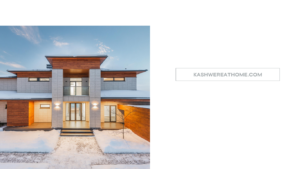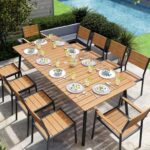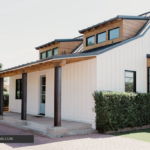Contents
- 1 DIY Home Energy Efficiency Improvements
- 1.1 Introduction
- 1.2 Understanding Home Energy Loss
- 1.3 Sealing Air Leaks
- 1.4 Improving Insulation
- 1.5 Window and Door Upgrades
- 1.6 HVAC System Optimization
- 1.7 Water Heating Efficiency
- 1.8 Lighting Improvements
- 1.9 Appliance and Electronics Management
- 1.10 Landscaping for Energy Efficiency
- 1.11 Water Conservation
- 1.12 FAQs About DIY Energy Efficiency
DIY Home Energy Efficiency Improvements
Introduction
DIY Home Energy Efficiency Improvements have become increasingly popular as homeowners seek ways to reduce their carbon footprint while simultaneously cutting down on utility bills. In today’s economic climate, investing in energy-efficient upgrades isn’t just environmentally responsible it’s financially savvy. From simple weekend projects that cost just a few dollars to more substantial renovations that deliver significant long-term savings,
there are countless ways to make your home more energy-efficient without professional help. This comprehensive guide will walk you through various DIY projects across your entire home, helping you identify energy inefficiencies and implement practical solutions. Whether you’re a seasoned DIY enthusiast or a beginner looking to make your first energy-conscious home improvements, these projects will help you create a more comfortable living space while reducing your energy consumption and saving money.
Understanding Home Energy Loss
Before diving into specific improvements, it’s important to understand how and where your home typically loses energy. Identifying these problem areas will help you prioritize your DIY projects for maximum impact.
Common Energy Loss Points
Your home loses energy in numerous ways, some more obvious than others. The U.S. Department of Energy estimates that the average home loses about 30% of its heating and cooling energy through air leaks, inadequate insulation, and inefficient windows and doors. Here’s a breakdown of typical energy loss points:
- Air Leaks (30-40%): Gaps around windows, doors, electrical outlets, plumbing fixtures, and other penetrations in your home’s envelope allow conditioned air to escape.
- Windows and Doors (20-30%): Even when closed, inefficient windows and doors can be major sources of energy loss through conduction, radiation, and air leakage.
- Insulation Deficiencies (20-30%): Inadequate insulation in walls, attics, and crawl spaces leads to significant thermal energy transfer.
- Ductwork (10-15%): Leaky or uninsulated ducts in unconditioned spaces like attics or crawl spaces waste heated or cooled air.
- Outdated Appliances and Systems (10-15%): Older HVAC systems, water heaters, and household appliances typically use more energy than modern, energy-efficient alternatives.
How to Conduct a DIY Energy Audit
Before starting any improvement projects, perform a basic energy audit to identify specific problem areas in your home:
- Visual Inspection: Check for visible gaps around windows, doors, and where different building materials meet.
- Draft Test: On a windy day, hold a lit incense stick near potential leak areas. If the smoke wavers or is blown, you’ve found an air leak.
- Insulation Assessment: Check your attic, exterior walls, and basement for adequate insulation. In most regions, attics should have 12-15 inches of insulation.
- Appliance Inventory: List your major appliances, their age, and energy ratings to identify potential upgrade candidates.
- Utility Bill Analysis: Review your energy bills from the past year to identify seasonal patterns and unusual spikes in usage.
Armed with this information, you’ll be better equipped to prioritize the following DIY projects based on your home’s specific needs.
Sealing Air Leaks
Perhaps the most cost-effective energy improvement you can make is sealing air leaks throughout your home. This project requires minimal investment while potentially reducing your energy bills by 10-20%.
Identifying Air Leaks
Air leaks commonly occur in these areas:
- Around windows and door frames
- Electrical outlets and switch plates
- Baseboards and crown molding
- Attic hatches
- Fireplace dampers
- Around pipes and wires entering your home
- Mail slots and pet doors
- Window air conditioning units
To find these leaks, you can:
- Conduct a visual inspection: Look for daylight around door and window frames, gaps in baseboards, or places where different materials meet.
- Use the hand test: On a cold or windy day, place your hand around potential leak areas to feel for drafts.
- Try the paper test: Close a door or window on a piece of paper. If you can pull the paper out without resistance, you’ve found a leak.
- Perform a smoke test: Light an incense stick and hold it near suspected leak areas. Smoke that wavers or is sucked away indicates an air leak.
DIY Air Sealing Materials

Once you’ve identified leaks, you’ll need these basic materials:
- Caulk: For sealing cracks and gaps less than ¼-inch wide
- Weatherstripping: For movable components like doors and operable windows
- Expanding foam sealant: For larger gaps around pipes, vents, and in basements
- Door sweeps: For gaps beneath exterior doors
- Foam gaskets: For electrical outlets and switch plates
- Window film: For sealing leaky windows during winter months
Step-by-Step Air Sealing Techniques
For Windows:
- Clean surfaces thoroughly
- Apply appropriate weatherstripping to movable parts
- Use caulk for stationary seams and joints
- Consider applying window film for winter months
For Doors:
- Apply self-adhesive weatherstripping to the door frame
- Install a door sweep on the bottom of exterior doors
- For rarely used doors, consider a foam gasket seal
For Electrical Outlets:
- Turn off power at the circuit breaker
- Remove outlet covers
- Install pre-cut foam gaskets
- Replace covers
For Plumbing Penetrations:
- Locate areas where pipes enter your home
- For small gaps, apply caulk around the pipes
- For larger gaps, use expanding foam sealant
- Allow to dry completely
Pro Tips for Effective Air Sealing
- Choose the right materials: Exterior caulk should be waterproof and UV-resistant; interior caulk can focus on flexibility and paintability.
- Work in moderate temperatures: Extreme heat or cold can affect how sealants cure.
- Address the attic first: Since warm air rises, attic leaks are often the most significant source of energy loss.
- Don’t forget hidden leaks: Seal around recessed lighting fixtures, bathroom fans, and other ceiling penetrations.
- Consider safety: Some homes, especially older ones, require a certain amount of air exchange for safety and to prevent moisture issues. Focus on obvious leaks but avoid completely sealing up your home DIY Home Energy Efficiency Improvements .
Improving Insulation
After air sealing, improving your home’s insulation offers the next biggest return on investment for energy efficiency. While some insulation projects require professional installation, many can be tackled by DIY enthusiasts.
Understanding Insulation Basics
Insulation is measured by its R-value, which indicates resistance to heat flow. Higher R-values mean better insulation performance. Recommended R-values vary by climate and the part of your home being insulated: DIY Home Energy Efficiency Improvements
- In cold climates (Zones 6-8), attics typically need R-49 to R-60
- In moderate climates (Zones 4-5), attics need R-38 to R-49
- In warm climates (Zones 1-3), attics need R-30 to R-38
Types of Insulation for DIY Projects
Several types of insulation are suitable for DIY installation:
Fiberglass Batts and Rolls
- Best for: Unfinished walls, floors, and ceilings
- R-value: 2.9-3.8 per inch
- Cost: $0.64-$1.19 per square foot
- Pros: Widely available, easy to handle, fire-resistant
- Cons: Can irritate skin and lungs during installation, must fit perfectly to be effective
Loose-Fill Cellulose
- Best for: Adding insulation to existing finished areas, attics, or hard-to-reach spaces
- R-value: 3.2-3.8 per inch
- Cost: $1.20-$2.00 per square foot
- Pros: Good for retrofits and irregularly shaped areas, contains recycled materials
- Cons: Requires a blowing machine (often available for rent), settles over time
Rigid Foam Boards
- Best for: Unfinished walls, foundation walls, floors, and ceilings
- R-value: 3.8-6.5 per inch
- Cost: $0.25-$0.50 per board foot
- Pros: High R-value per inch, blocks thermal bridging
- Cons: More expensive, requires careful cutting and sealing
Reflective Insulation
- Best for: Unfinished walls, ceilings, and floors, especially in hot climates
- R-value: Varies by application
- Cost: $0.15-$0.50 per square foot
- Pros: Good for reducing radiant heat transfer in hot climates
- Cons: Less effective in cold climates
DIY Insulation Projects
Attic Insulation
- Ensure the attic is properly air-sealed first
- Measure current insulation depth and calculate how much you need to add
- Wear protective gear (mask, gloves, long sleeves, safety glasses)
- Lay unfaced fiberglass batts perpendicular to joists, or use a rented blower for loose-fill insulation
- Ensure vents remain unblocked
- Install insulation baffles where needed to maintain airflow
Wall Insulation (Unfinished Walls)
- Measure the wall cavity dimensions
- Cut fiberglass batts or rigid foam to fit precisely
- Place the insulation between studs, ensuring no gaps
- Secure with staples if using batts
- Cover with appropriate wall material
Basement Rim Joist Insulation
- Cut rigid foam board to fit between floor joists where they meet exterior walls
- Apply a bead of caulk around the perimeter of each rim joist area
- Press the foam board into place
- Seal around the edges with expanding foam
Water Heater Insulation
- Purchase a water heater insulation blanket kit
- Follow the manufacturer’s instructions for installation
- Be sure to leave the thermostat access panel uncovered
- Secure with tape (avoid covering the top of gas water heaters)
Safety Considerations for DIY Insulation
- Always wear proper protective equipment: respirator or dust mask, gloves, long sleeves, eye protection
- Never cover recessed lights with insulation unless they are IC-rated
- Leave a minimum 3-inch clearance around chimneys, flues, and exhaust fans
- Don’t compress insulation, as this reduces its R-value
- When working in attics, step only on joists or use boards laid across joists
Window and Door Upgrades
Windows and doors account for up to 30% of a home’s energy loss. While replacing them with energy-efficient models offers the best performance, there are many DIY improvements that can boost efficiency without the high cost of replacement.
Window Efficiency Improvements
Window Weatherstripping
- Clean the window frame thoroughly
- Measure each section requiring weatherstripping
- Cut V-seal, felt, or foam tape to fit
- Apply to clean, dry surfaces following product instructions
- Test the window operation to ensure it still opens and closes properly
Window Caulking
- Remove old, cracked caulk with a utility knife or caulk remover
- Clean the area with alcohol and allow to dry
- Apply a continuous bead of silicone or acrylic latex caulk to all fixed seams
- Smooth with a wet finger or caulk tool
- Allow to dry completely before painting, if necessary
Window Film Installation
- Purchase a window insulation kit from a hardware store
- Clean windows thoroughly
- Apply double-sided tape around the window frame
- Carefully attach the plastic film to the tape
- Use a hair dryer to heat and shrink the film until it’s tight and wrinkle-free
DIY Storm Windows
- Measure your window dimensions
- Cut acrylic sheeting 1/8″ smaller than the opening
- Attach magnetic strips to the window frame
- Attach corresponding magnetic strips to the acrylic
- Attach the acrylic panel to the window using the magnetic strips
Window Treatments for Energy Efficiency
| Treatment Type | Energy Savings | Cost | Ease of Installation |
|---|---|---|---|
| Cellular Shades | 10-15% | $25-$65 per window | Easy |
| Thermal Curtains | 10-25% | $30-$150 per window | Easy |
| Interior Shutters | 10-15% | $150-$400 per window | Moderate |
| Window Quilts | 25-40% | $25-$50 DIY | Moderate |
| Exterior Solar Screens | 60-80% of solar heat | $25-$40 per window | Moderate |
Door Efficiency Upgrades
Door Weatherstripping
- Measure the perimeter of the door
- Cut weatherstripping to fit
- Clean door frame thoroughly
- Apply self-adhesive weatherstripping to the door jamb where the door closes
- Test door closure and adjust as needed
Door Sweeps
- Measure the width of the door
- Cut the door sweep to fit if necessary
- Position the sweep against the bottom of the door
- Mark screw positions
- Pre-drill holes if needed
- Attach the sweep with screws
- Adjust height so it contacts the threshold but doesn’t impede door movement
Threshold Replacement/Adjustment
- Remove the old threshold if replacing
- Clean the area thoroughly
- Install the new threshold following product instructions
- For adjustable thresholds, use a screwdriver to raise or lower until it makes light contact with the door sweep
Storm Door Installation
- Measure your door opening carefully
- Purchase a pre-hung storm door kit
- Follow the manufacturer’s instructions to install the hinge-side Z-bar
- Hang the door on the hinges
- Install the latch-side Z-bar
- Add the top Z-bar
- Install the pneumatic closer and wind chain
DIY Window and Door Maintenance
Regular maintenance improves energy efficiency:
- Lubricate moving parts annually
- Tighten loose hinges and handles
- Adjust strike plates if doors don’t close properly
- Replace cracked or deteriorated weatherstripping
- Reapply caulk when it becomes brittle or separated
- Clean tracks on sliding doors and windows to ensure proper closure
- DIY Home Energy Efficiency Improvements
HVAC System Optimization
Your heating, ventilation, and air conditioning (HVAC) system accounts for about half of your home’s energy consumption. While some maintenance requires professional service, there are several DIY improvements that can significantly boost efficiency.
DIY HVAC Maintenance
Regular Filter Replacement
- Identify your filter size (printed on the existing filter)
- Purchase the appropriate replacement (higher MERV ratings capture more particles but may restrict airflow)
- Turn off your HVAC system
- Remove the old filter
- Insert the new filter with arrows pointing toward the blower
- Mark the replacement date on the filter frame
- Set a reminder to check it monthly and replace every 1-3 months
Duct Sealing
- Turn off your HVAC system
- Inspect accessible ductwork for leaks, particularly at joints and connections
- Clean surfaces to be sealed
- Apply mastic sealant or metal tape (not duct tape) to all seams and connections
- Pay special attention to return air plenum connections and supply branches
- For larger gaps, use mesh tape covered with mastic
Programmable Thermostat Installation
- Turn off power to your HVAC system at the breaker box
- Remove the old thermostat cover
- Take a photo of the wiring before disconnecting
- Label wires if they aren’t already color-coded
- Disconnect wires and remove the old mounting plate
- Install the new mounting plate and connect wires according to the manufacturer’s instructions
- Attach the new thermostat to the mounting plate
- Restore power and program according to your schedule
Vent and Register Optimization
- Remove and clean all registers and vents
- Use a vacuum with a long attachment to clean inside ducts as far as you can reach
- Check for proper operation of dampers in the registers
- Ensure furniture and curtains don’t block airflow
- Consider closing vents in rarely used rooms (with caution—some systems require minimum airflow)
Smart Thermostat Options and Features
Smart thermostats offer significant energy savings with minimal effort. Here’s a comparison of popular options:
| Feature | Nest Learning | Ecobee SmartThermostat | Honeywell Home T9 | Amazon Smart Thermostat |
|---|---|---|---|---|
| Price | $249 | $219 | $200 | $59 |
| Learning Capability | Yes | Limited | No | Limited |
| Remote Sensors | Optional | Included | Optional | No |
| Voice Control | Google Assistant | Alexa Built-in | Works with multiple | Alexa |
| Geofencing | Yes | Yes | Yes | Yes |
| Energy Reports | Yes | Yes | Yes | Basic |
| Installation Difficulty | Easy | Moderate | Easy | Easy |
| Est. Annual Savings | $131-$145 | $120-$140 | $100-$120 | $50-$80 |
DIY Radiant Barriers
In hot climates, installing a radiant barrier in your attic can reduce cooling costs:
- Purchase reflective insulation designed for attic installation
- Ensure proper safety equipment and work during cool hours
- Measure and cut panels to fit between rafters
- Staple the reflective material to the underside of roof rafters, leaving 1″ air space
- Ensure material doesn’t contact electrical fixtures or cover soffit vents
Additional HVAC Efficiency Tips
- Ceiling Fans: Install ENERGY STAR-rated ceiling fans to improve air circulation. Reverse fan direction seasonally (clockwise in winter, counterclockwise in summer).
- Zoning with Dampers: Install adjustable dampers in ductwork to direct airflow where needed most.
- Attic Fans: In hot climates, consider installing an attic fan to remove hot air and reduce cooling load.
- Mini-Split Support: While installation requires professionals, DIY Home Energy Efficiency Improvements, run electrical, and prepare wall penetrations to reduce labor costs.
Water Heating Efficiency
Water heating accounts for about 18% of home energy use. Several DIY projects can improve efficiency:
Water Heater Insulation
- Check your water heater—if it’s warm to the touch, it needs insulation
- Purchase a water heater insulation blanket kit (around $20)
- Turn the water heater to “vacation” mode or pilot
- Measure and cut the blanket to fit, leaving space for controls and the flue (on gas models)
- Wrap the blanket around the tank and secure with tape
- Never cover the top of a gas water heater or any controls, safety warnings, or the TPR valve
Hot Water Pipe Insulation
- Measure the diameter of your hot water pipes
- Purchase pipe insulation sleeves of the correct diameter
- Cut sleeves to length with scissors or a utility knife
- Slip the insulation over the pipes, particularly the first 6 feet from the water heater
- Secure with tape, wire, or zip ties as needed
- Pay special attention to pipes in unheated areas
Low-Flow Fixture Installation
- Showerheads: Unscrew the old showerhead, clean the threads, apply plumber’s tape, and install the new low-flow model.
- Faucet Aerators: Unscrew the existing aerator, clean the faucet threads, and install the new low-flow aerator.
| Fixture Type | Standard Flow Rate | Low-Flow Rate | Annual Water Savings | Annual Energy Savings |
|---|---|---|---|---|
| Showerhead | 2.5+ gpm | 1.5-1.8 gpm | 2,900 gallons | $45-$75 |
| Bathroom Faucet | 2.2+ gpm | 0.5-1.5 gpm | 700 gallons | $30-$50 |
| Kitchen Faucet | 2.2+ gpm | 1.5-1.8 gpm | 650 gallons | $30-$45 |
Temperature Adjustment
- Locate the temperature dial on your water heater
- Turn off power to electric heaters or set gas heaters to pilot
- Remove the access panel(s) for electric heaters
- Adjust the temperature to 120°F (often marked as “normal”)
- Replace covers and restore power
- Wait several hours, then test water temperature with a thermometer
Timer Installation (Electric Water Heaters)
- Purchase a water heater timer appropriate for your model
- Turn off power at the breaker
- Mount the timer near the water heater
- Connect wiring according to the manufacturer’s instructions
- Program the timer to turn off during typical non-use periods
- Restore power and test operation
Heat Traps
- Turn off power/gas and water supply to the heater
- Drain a small amount of water from the tank
- Install heat trap valves or loops on both the inlet and outlet pipes
- Restore water supply and power/gas
Lighting Improvements
Lighting accounts for about 15% of a home’s electricity use. Updating your lighting is one of the easiest and most rewarding DIY energy efficiency projects.
LED Lighting Conversion
Replacing incandescent bulbs with LEDs offers immediate energy savings:
- Inventory your current bulbs, noting wattage, base type, and whether they’re dimmable
- Choose appropriate LED replacements (use lumens rather than watts to match brightness)
- Consider color temperature: 2700K-3000K for warm, cozy light; DIY Home Energy Efficiency Improvements 3500K-4100K for neutral white; 5000K+ for daylight
- Replace the most frequently used bulbs first for maximum savings
- Keep receipts for utility rebate programs
| Bulb Type | Average Lifespan | Energy Use | Replacement Cost | Annual Operating Cost |
|---|---|---|---|---|
| Incandescent (60W) | 1,000 hours | 60 watts | $1-$2 | $7.23 |
| CFL (13W) | 8,000 hours | 13 watts | $2-$3 | $1.57 |
| LED (9W) | 25,000 hours | 9 watts | $2-$5 | $1.08 |
Smart Lighting Installation
Smart lighting systems increase convenience while improving efficiency:
- Decide between Wi-Fi, Bluetooth, or hub-based systems
- For simple setups, start with smart bulbs in frequently used fixtures
- For more comprehensive systems, replace key light switches with smart switches
- Set up schedules, occupancy rules, and dimming preferences
- Integrate with voice assistants if desired
DIY Fixture Upgrades
- Turn off power at the breaker
- Remove the old fixture, noting wiring connections
- Install the new ENERGY STAR-rated fixture according to instructions
- Use LED bulbs appropriate for the fixture
- Restore power and test operation
Motion Sensors and Timers
- Turn off power at the breaker
- Remove the existing switch
- Connect the motion sensor according to manufacturer’s instructions (typically black to black, white to white, ground to ground)
- Secure the sensor to the electrical box
- Restore power and adjust settings (sensitivity, timer duration)
Natural Lighting Optimization
- Window Cleaning: Clean windows inside and out to maximize natural light
- Strategic Mirror Placement: Place mirrors opposite windows to reflect light deeper into rooms
- Light-Colored Paint: Repaint dark rooms with light colors to improve reflectivity
- Solar Tube Installation: For advanced DIYers, install solar tubes to bring natural light into interior spaces
Outdoor Lighting Efficiency
- Replace outdoor fixtures with LED versions
- Install photocell sensors to ensure lights only operate when dark
- Add motion sensors to security lights
- Consider solar-powered landscape lighting that charges during the day and operates at night
Appliance and Electronics Management
While replacing appliances with energy-efficient models offers the greatest savings, there are many ways to optimize your existing appliances.
Refrigerator Optimization
- Coil Cleaning:
- Unplug the refrigerator
- Locate the coils (usually behind or beneath the unit)
- Vacuum thoroughly using the brush attachment
- For stubborn dust, use a coil cleaning brush
- Replace any covers and restore power
- Seal Maintenance:
- Inspect door gaskets for cracks or gaps
- Clean seals with mild detergent
- Test seal tightness by closing the door on a dollar bill—if it pulls out easily, the seal needs replacement
- For minor leaks, apply petroleum jelly to rejuvenate the seal
- Temperature Settings:
- Set refrigerator to 38°F and freezer to 0°F
- Use a refrigerator thermometer to verify temperatures
Oven and Range Efficiency
- Oven Calibration:
- Use an oven thermometer to check accuracy
- Adjust settings according to manufacturer’s instructions if off by more than 25°F
- Burner Maintenance:
- Clean burner ports with a pin or small wire
- For electric ranges, ensure burner pans are clean and reflective
- Cooking Habits:
- Use appropriately sized pots for burners
- Keep lids on pots when cooking
- Use the microwave for small portions
- Consider using toaster ovens or air fryers for small meals
Washer and Dryer Optimization
- Washer Maintenance:
- Clean the filter monthly
- Run a cleaning cycle with vinegar and baking soda monthly
- Check hoses for leaks or cracks annually
- Dryer Maintenance:
- Clean the lint filter before each load
- Check and clean the vent duct annually
- Clean moisture sensors with alcohol occasionally
- Operational Efficiency:
- Wash in cold water when possible
- Use high-speed spin cycles to remove more water before drying
- Dry consecutive loads to take advantage of residual heat
- Consider installing a heat diverter for winter months
Electronics and Phantom Power Management
- Smart Power Strip Installation:
- Identify electronics groups (entertainment center, computer setup, etc.)
- Connect main device (TV, computer) to the control outlet
- Connect peripherals to switched outlets
- Connect always-on devices to unswitched outlets
- Timer Power Strips:
- Install timer power strips for devices used at predictable times
- Program the timer to cut power during typical non-use hours
- Device Settings Optimization:
- Enable sleep/power saver modes on all compatible devices
- Adjust screen brightness to the minimum comfortable level
- Set computers to sleep after 15-30 minutes of inactivity
- Enable ENERGY STAR features on compatible devices
DIY Smart Home Energy Monitoring

- Purchase a home energy monitoring system
- Follow manufacturer’s instructions for installation (some require electrician installation)
- Set up the software or app
- Create usage alerts for unusual consumption
- Use data to identify energy hogs and usage patterns
Landscaping for Energy Efficiency
Strategic landscaping can reduce heating and cooling costs by up to 25% while enhancing your property’s appearance.
Shade Tree Planting
- Tree Selection:
- Choose deciduous trees for south, east, and west sides
- Select species appropriate for your climate zone
- Consider mature height and spread (typically 20-40 feet from your home)
- Planting Process:
- Dig a hole twice as wide as the root ball but no deeper
- Remove the container or burlap
- Place the tree in the hole with the trunk flare above soil level
- Backfill with native soil, water thoroughly
- Apply 2-3 inches of mulch, keeping it away from the trunk
- Maintenance:
- Water deeply once a week for the first year
- Prune to maintain shape and remove damaged branches
- Avoid topping or over-pruning
Windbreak Installation
- Plant Selection:
- Choose evergreen trees and shrubs for north and northwest sides
- Select species that grow densely from ground level up
- Consider mature height (typically 30-50 feet)
- Planting Pattern:
- Plant in a U or L shape to deflect winter winds
- Space trees according to species recommendations (typically 6-15 feet apart)
- Use multiple rows for maximum effectiveness
Vine Trellises for Wall Shading
- Trellis Construction:
- Select a sturdy material (wood, metal, or composite)
- Mount the trellis 6-12 inches from the wall to allow airflow
- Secure firmly to the building or ground
- Ensure the structure can support mature vines
- Vine Selection:
- Choose deciduous vines for seasonal shading
- Consider growth rate and maintenance requirements
- Avoid invasive species or those that attach directly to walls
- Planting and Training:
- Plant vines at the base of the trellis
- Train young shoots onto the support structure
- Prune regularly to maintain desired coverage and prevent overgrowth
- Paving Materials:
- Replace dark asphalt or concrete with permeable pavers or light-colored materials
- Consider recycled rubber pavers for pathways
- Install gravel or mulched paths instead of solid surfaces where practical
- Deck and Patio Shading:
- Install pergolas with adjustable canvas covers
- Plant climbing plants for natural shade
- Consider retractable awnings for seasonal shading
- Fencing and Privacy Screens:
- Position solid fences to block winter winds or provide summer shade
- Use living screens (tall grasses, shrubs) for flexible, natural barriers
- Consider lattice-top fences that provide partial shade without blocking breezes
Water Conservation
Water efficiency goes hand-in-hand with energy efficiency, as heating water accounts for a significant portion of energy use.
Rain Barrel Installation
- Barrel Selection:
- Choose food-grade plastic barrels (55-gallon minimum)
- Select a dark color to prevent algae growth
- Ensure a sealed lid with fine mesh screening for safety and mosquito prevention
- Installation Process:
- Place the barrel on a level, elevated surface (cement blocks or a stand)
- Cut the downspout to appropriate height
- Install a diverter or direct the downspout into the barrel opening
- Add an overflow hose directed away from your foundation
- Install a spigot near the bottom for easy access
- Maintenance:
- Clean filters regularly
- Drain completely before winter in cold climates
- Check for leaks at connections seasonally
Drip Irrigation System
- System Design:
- Map your garden areas and water needs
- Group plants with similar water requirements
- Calculate water flow and pressure requirements
- Installation Steps:
- Connect a backflow preventer to your water source
- Install a pressure regulator and filter
- Run main 1/2″ tubing around your garden
- Connect 1/4″ micro-tubing to reach individual plants
- Add appropriate emitters based on plant needs
- Secure tubing with stakes and cover with mulch
- Smart Controllers:
- Install a smart irrigation controller that adjusts based on weather
- Connect soil moisture sensors for automated watering
- Set up zones based on plant needs and sun exposure
Graywater Diversion (Where Legal)
- Simple Systems:
- Install a washing machine diverter valve
- Connect to 1″ irrigation hose
- Direct water to landscape areas away from edible portions of plants
- Rotate watering locations to prevent soap buildup
- Considerations:
- Check local codes before installation
- Use plant-friendly, biodegradable detergents
- Avoid watering root vegetables or other edibles with graywater
- Include a way to divert to sewer when using bleach or strong chemicals
Lawn Alternatives
- Native Groundcover:
- Remove existing lawn in sections
- Prepare soil with compost
- Plant drought-tolerant native groundcovers
- Mulch heavily until established
- Xeriscaping:
- Design with drought-resistant plants
- Group plants with similar water needs
- Use decorative rock or mulch for pathways and accents
- Install drip irrigation for establishment phase
FAQs About DIY Energy Efficiency
What DIY improvements offer the best return on investment?
Air sealing and attic insulation typically offer the highest ROI, with payback periods often under two years. These projects address the largest sources of energy loss and require relatively modest investments. Smart thermostats and LED lighting also provide excellent returns, with payback periods of 6-12 months in many cases.
How much money can I save with DIY energy efficiency improvements?
The average homeowner can reduce energy bills by 20-30% through comprehensive DIY improvements. This typically translates to $300-$600 annual savings, though the exact amount depends on your local energy costs






